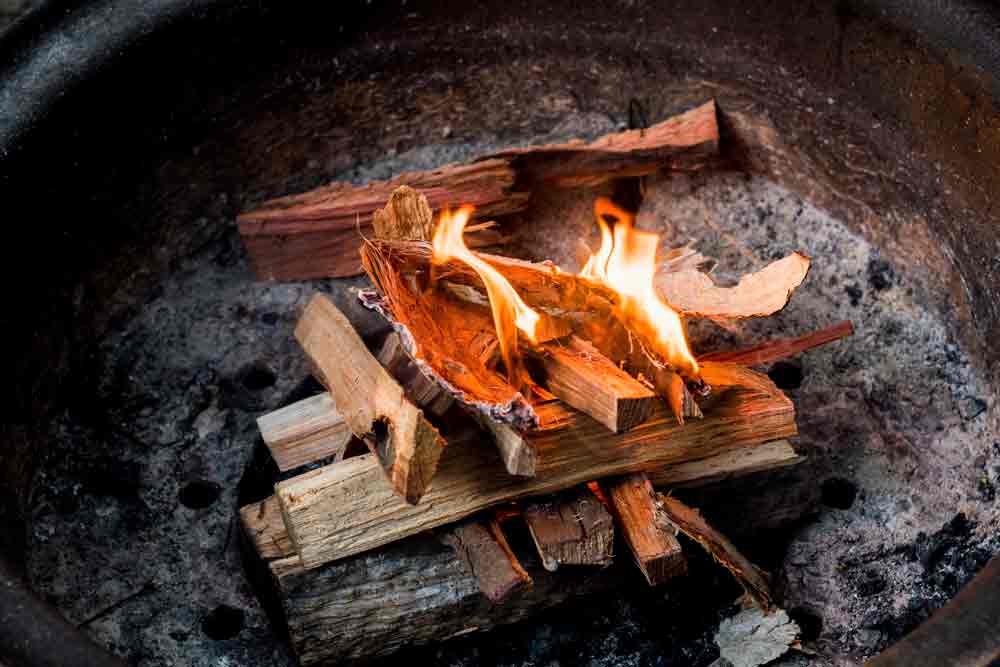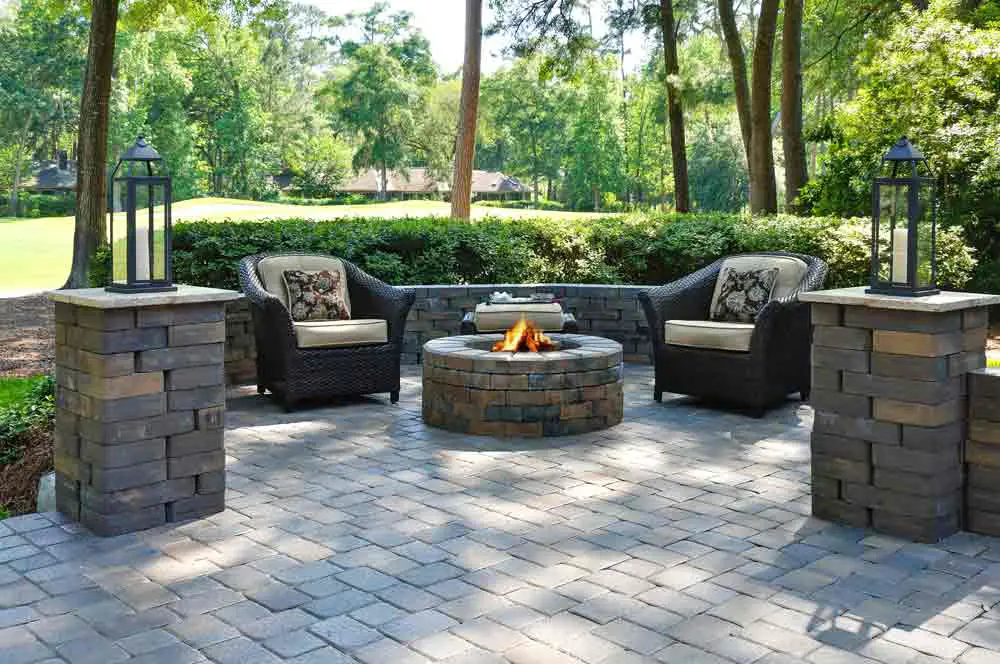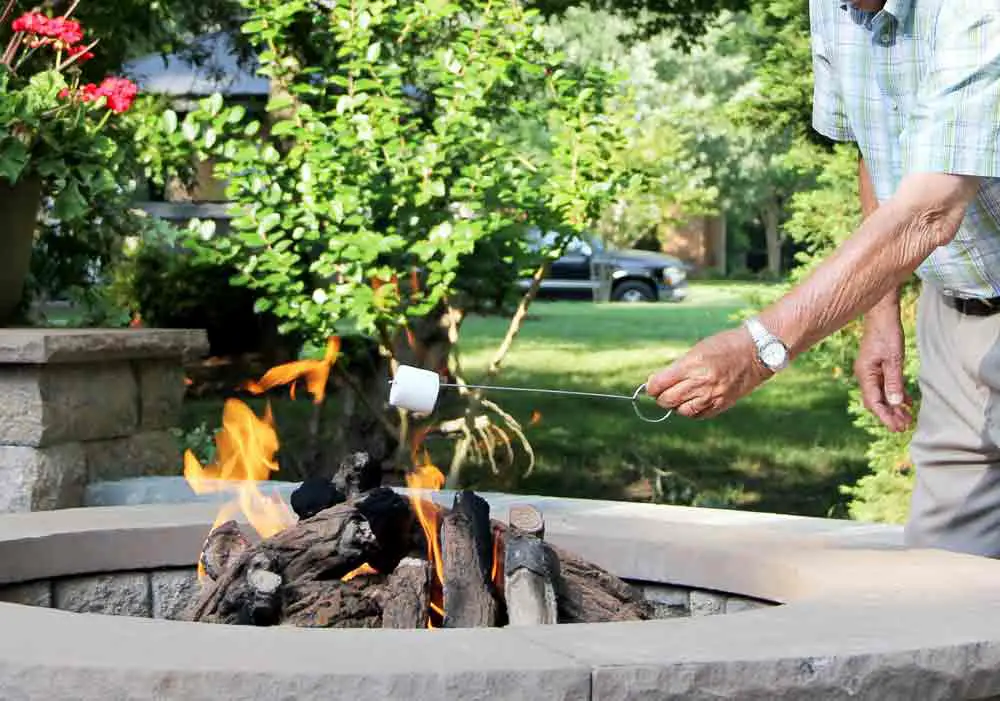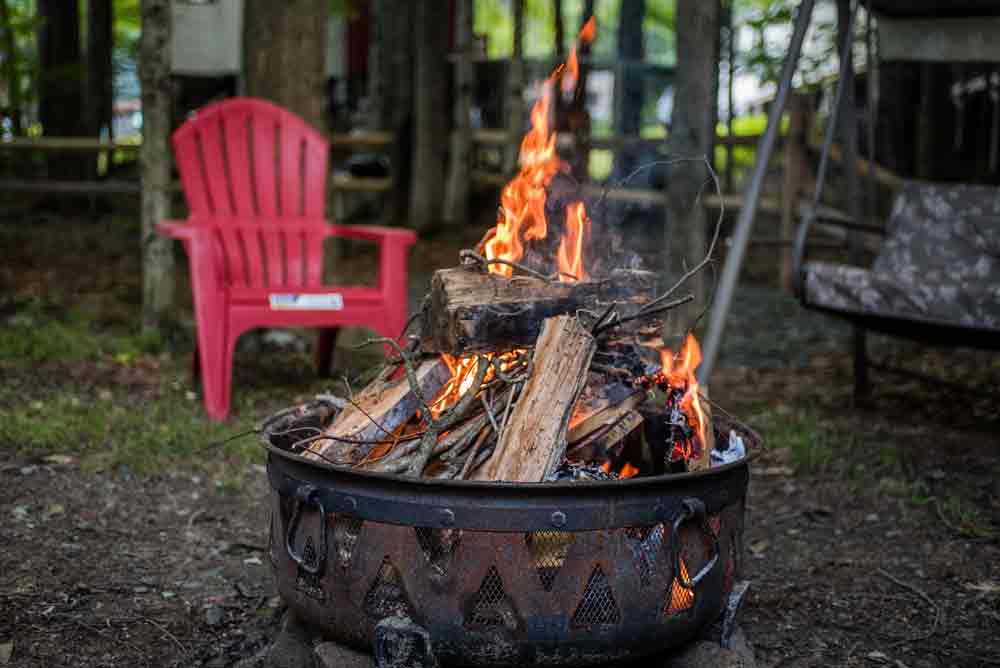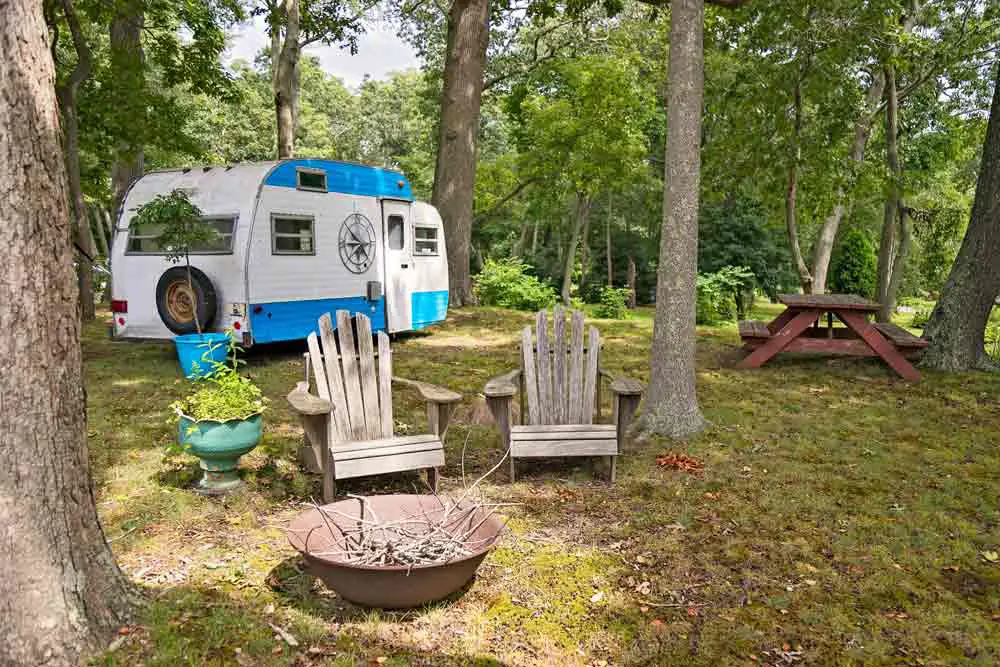Many types of wood should not be burned for fire pits. From green wood to driftwood and pressure-treated wood, burning the wrong kind of wood can cause several issues, including smoke that is hazardous to your health. This article will discuss nine types of wood you should avoid burning in your fire pit.
Types of Wood to Avoid Burning Treated Wood
Pressure-Treated Wood
Pressure-treated wood contains chemicals that should not be released into the environment. Burning it can produce toxic smoke, which is harmful to breathe in.
Greenwood
Greenwood has a high moisture content and doesn’t burn well. It will smolder and create more smoke than heat. This type of smoke is especially hazardous when inhaled.
Driftwood
Driftwood is often full of salt, which can corrode the metal of your fire pit. Additionally, driftwood may contain harmful chemicals that release unhealthy smoke when burned.
Painted Wood
Painted wood contains volatile organic compounds (VOCs), a pollutant released when burning painted wood. These compounds can cause health issues when inhaled.
Plywood
Plywood comprises several thin layers of wood glued together with a resin. The resin in plywood produces dangerous fumes and particles when burned, making it unsafe for use in fire pits.
Oleander
Oleander is often found as driftwood along beaches and is toxic to humans and animals when burned. In extreme cases, ingesting the smoke from burning oleander can cause nausea, vomiting, and even death.
Softwoods
Softwoods contain a lot of sap, creating a lot of smoke and soot. This will make your fire pit smoky, leaving unpleasant odors and making breathing difficult.
Composite wood
Composite wood is made from sawdust and glue, creating a material that releases dangerous toxins when burned. It is best to avoid burning composite wood in your fire pit.
Poisonous Wood
Some plants, such as yew and poison ivy, release toxic smoke when burned. These particles can cause severe respiratory issues and should be avoided.
Alternatives to Burning Wood
Regarding fire pits, you can use several alternative fuel sources. These include natural gas, propane, and bioethanol, all burning cleaner than wood and producing less smoke. By avoiding the types of wood mentioned above, you can enjoy a safer and more pleasant experience with your fire pit. However, always check your local regulations before using these fuel sources.
Why It’s Important to Know What Wood Not to Burn
Wood burning is popular for those looking to create beautiful art pieces or enjoy a fire’s warmth. However, it’s essential to know what wood not to burn to avoid potential health and safety risks.
The type of wood you choose can impact the efficiency and safety of your fire. Softwoods with minimal grain, such as pine or aspen, are easier to burn than hardwoods. Hardwoods like oak and maple require more heat and longer burning times to combust fully. Burning green or unseasoned wood can also be dangerous because it contains high moisture levels, which can cause smoke and creosote to build up in your chimney. Additionally, some types of wood may contain chemicals that can be hazardous when burned.
It’s also important to consider the size of the wood you’re burning. Smaller pieces will burn faster and hotter than larger ones, so it’s best to use smaller logs if you’re looking for a quick fire. Larger logs will take longer but will provide more sustained heat over time.
Toxic Fumes from Burning Wood
Burning wood can release toxic fumes into the air that can be hazardous to your health. Unseasoned, green, and treated wood contains dangerous chemicals released into the atmosphere when burned. Pressure-treated wood releases arsenic and chromium while burning green or unseasoned wood produces a significant amount of smoke and creosote made of tar and other dangerous materials.
When burning wood indoors, paying attention to the type and amount of smoke your fire produces is especially important. This will indicate how efficient it is running and if you need to adjust the air supply for better combustion. Regularly cleaning your chimney if using an open pit or fireplace is also essential so any creosote buildup in the flue does not become a fire hazard.
Can You Burn Pine Wood in A Fire Pit
Burning pine wood in a fire pit can be a great option as it has several advantages over other types of wood. Pine wood is softwood, so it burns quickly and is hot, making it great for quickly starting a fire. Additionally, the resin content in softwoods like pine makes them ideal for enclosed stoves because they produce less smoke than hardwoods.
However, burning pine wood can also be dangerous if not done correctly. The resin content in pine wood causes sparks to fly more readily, which can cause fires if not supervised carefully or used in an open pit or fireplace that does not have proper safety precautions. It’s essential to take extra care when using softwoods like pine and ensure your chimney or flue is cleaned regularly, so any creosote buildup does not become a fire hazard.
Can You Burn Particle Board in A Fire Pit
Burning particle board in a fire pit is not recommended. Particle board is made from sawdust, wood chips, and other pieces of wood glued together with a formaldehyde or phenol-formaldehyde resin. When burned, these resins release hazardous chemicals such as benzene and formaldehyde into the air, harming your health. Additionally, particle board burns faster than standard logs and produces more sparks that can cause fires if not monitored carefully. Therefore it’s safest to avoid burning particle board in an open pit or fireplace.
What Wood Is Toxic to Burn?
Burning wood treated with preservatives or pressure-treated wood is highly toxic and should be avoided. Pressure-treated wood contains chemicals like arsenic and chromium, which can release dangerous particles when burned. Ingesting these particles can cause severe illness and even death in some cases. Burning any composite wood such as plywood, particle board, MDF, or OSB should also be avoided as they contain hazardous chemicals that can become airborne. For safety purposes, it’s best to stick to only burning seasoned hardwoods such as oak, hickory, and maple that have been adequately dried before burning them in a fire pit.
Can You Burn Regular Wood in The Fire Pit?
It is safe to burn regular wood in a fire pit if properly dried and seasoned. Dried wood will not only create less smoke, but it will also burn more slowly and evenly. Wood that is too wet or unseasoned can produce more smoke, resulting in an uneven burn. When burning wood in a fire pit, ensure you monitor the sparks so they don’t cause any accidental fires.
How Do You Know if The Wood Is Safe to Burn?
The best way to determine whether the wood is safe to burn is by checking if it’s been properly seasoned. Wood left outside for 6-12 months and visibly weathered should be ready to burn. You can also check for moisture content with a wood moisture meter, which will tell you how dry the wood is. If the wood is between 12-20 percent moisture, it can usually be burned safely.
How Long Should Wood Sit Before You Burn It?
To ensure that wood is safe to burn, it should be seasoned for at least 6-12 months. During this time, the wood should be exposed to wind and sun to dry out moisture. Once the wood has visibly weathered, it can be burned in a fire pit.
How Long Should Wood Be Left Before Burning?
Generally, it would be best to dry or “season” firewood for 6 to 18 months before burning. This will ensure the wood is dry enough to burn efficiently and safely.
Wood can be dried in a kiln at 160 degrees for 75 minutes or left out in the open air for 6-9 months. If you want to check if your wood is ready to burn, try burning a piece on a roaring firebase – if three sides begin to burn within 15 minutes, then the fuel is dry.
To help speed up the drying process, stack your firewood in an open area with plenty of airflows and direct sunlight. Ensure you don’t stack too much wood together, as this will limit airflow and slow the drying process.
Remember that when it comes to burning wood, safety should always come first! Ensure your wood is properly seasoned before using it in your fireplace or stove.
Conclusion
In conclusion, several types of wood should not be burned in a fire pit. These include treated wood, greenwood, driftwood, painted wood, plywood, oleander, softwoods, composite wood, and poisonous woods. To ensure the safety of yourself and others around you when using your fire pit, always avoid burning these types of wood. Additionally, consider using alternative fuel sources that burn cleaner and produce less smoke. Always check your local regulations before doing so.

